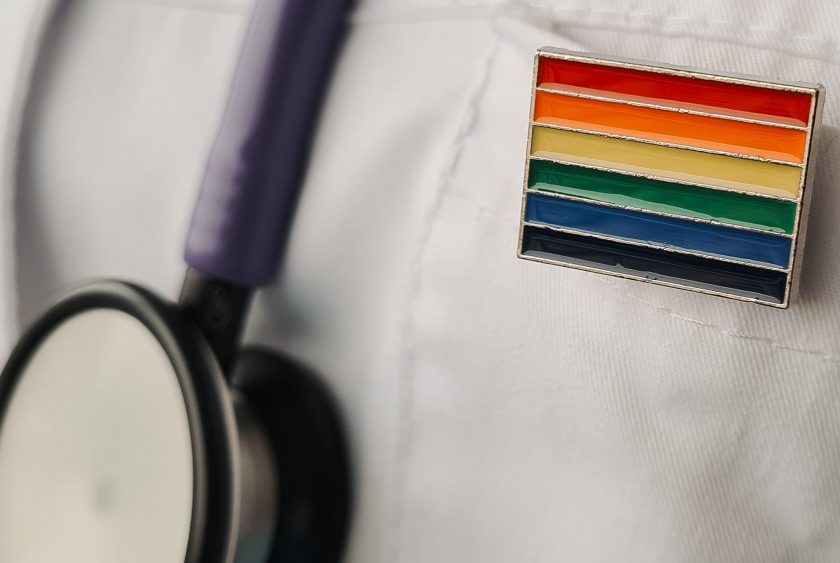
International Day Against Homophobia, Biphobia, Intersexism and Transphobia (IDAHOBIT) is observed on May 17. IDAHOBIT invites us to reflect on how we can celebrate LGBTIQA+ diversity and inclusion while raising awareness of the LGBTIQA+ discrimination which still occurs today.
IDAHOBIT is also an opportunity to reflect on our own workplace, the importance of inclusive practices, and ways we can learn to incorporate those into our own practice.
Unfortunately, negative experiences related to discrimination and stigma can prevent LGBTIQA+ people from accessing services and disclosing relevant information about their health and needs [1] all of which results in poorer health outcomes. This issue has been recognised by some of Australia’s key health professional bodies including the Australian Medical Association (AMA). The AMA notes that discriminatory behaviours against LGBTIQA+ people have direct health implications and that there is no place for these behaviours in health care [2].
Every person deserves access to compassionate, respectful, and high-quality health care, regardless of their sexual orientation, gender identity, or intersex status. As health care providers, we can work towards breaking down the barriers for LGBTIQA+ people in accessing services by ensuring they feel safe, seen and supported.
There are many simple things you can do to support LGBTIQA+ people to feel safe and welcome in health care settings:
A great place to start is by providing staff with LGBTIQA+ inclusion training. People often want to support LGBTIQA+ communities but aren’t sure how and don’t know where to start. Great LGBTIQA+ inclusion training covers the basic terminology but also provides up-to-date information, covers an understanding of how discrimination impacts health outcomes and provides people with the skills to create and maintain a safe and inclusive environment for LGBTIQA+ people.
Inclusive language and practices are also a great place to start. Using inclusive language demonstrates respect for individuals of all gender identities, sexual orientations and bodily diversity. Using people’s correct name and pronouns when the person is present or not is a sign of respect and is an important and validating part of gender affirmation. Encouraging the display of pronouns on things like e-mail signatures and welcome e-mails is a way to create a shift in day-to-day language to be more inclusive. If you’re not sure which pronouns to use, you can ask. Asking someone’s pronouns can be a way to show that you are aware of the needs of gender diverse communities, creating cultural safety within your practice.
“Using the correct pronoun for someone may be a little detail, but it’s an important one. It shows respect, and lets the other person know that you’ll be taking what they say seriously which is a standard all inclusive practises should strive for.”
– Brynn McAvaney, Senior Peer Support Worker
Creating a workplace environment that displays comfort and celebration of LGBTIQA+ people can also be a helpful way to indicate that you welcome LGBTIQA+ people. For example, posters that celebrate LGBTIQA+ communities or a rainbow flag around the workplace such as in a waiting room or in client rooms of a clinic.
Policy changes are an essential way that organisations can provide systemic change to improve LGBTIQA+ access to health care. Organisations can put in place policies and procedures that improve LGBTIQA+ experiences and access to health care. Organisations can also look at structural changes that foster a workplace culture that celebrates diversity and supports staff across the whole organisation to continue modelling and advocating for inclusive practices.
Creating an inclusive workplace not only supports health care clients but can also foster increased job satisfaction, engagement and productivity. For LGBTIQA+ staff and colleagues, inclusive practices in the workplace creates a sense of safety and sends the message that they are respected and valued for who they are.
This IDAHOBIT, SHINE SA encourages all health care providers to consider how they can create a more LGBTIQA+ inclusive workplace, for the benefit of clients but also for their organisation and community at large.
Interested in learning more?
There are many great resources available for beginning conversations and processes towards LGBTIQA+ Inclusion, including:
LGBTIQ+ Inclusive Language Guide
Research Matters: Why do we need LGBTIQ-inclusive services
Rainbow Tick Standards A Framework for LGBTIQ Cultural Safety
LGBTIQA+ Inclusion Training
SHINE SA and SAMESH offer the following training:
Foundations of LGBTIQ+ Inclusion Training is a one-day workshop that provides individuals with an overview of the knowledge needed to create and support inclusive workplace practices.
SHINE SA also offers HOW2 LGBTIQ Inclusion Training which helps support systemic change in organisations. This training is open to people in leadership positions and provides the practical tools to support organisations to undertake cultural change and develop genuinely inclusive services and programs.
To view all of SHINE SA’s LGBTIQA+ inclusion training options visit: LGBTIQA+ Inclusion Training.









